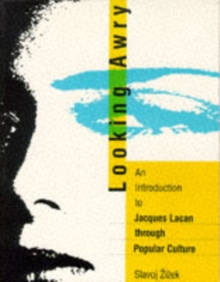
Compulsive Beauty Paperback / softback
by Hal (Princeton University) Foster
Part of the October Books series
Paperback / softback
Description
In Compulsive Beauty, Foster reads surrealism from its other, darker side: as an art given over to the uncanny, to the compulsion to repeat and the drive toward death. Surrealism has long been seen as its founder, Andre Breton, wanted it to be seen: as a movement of love and liberation.
In Compulsive Beauty, Foster reads surrealism from its other, darker side: as an art given over to the uncanny, to the compulsion to repeat and the drive toward death.
To this end Foster first restages the difficult encounter of surrealism with Freudian psychoanalysis, then redefines the crucial categories of surrealism-the marvelous, convulsive beauty, objective chance-in terms of the Freudian uncanny, or the return of familar things made strange by repression.
Next, with the art of Giorgio de Chirico, Max Ernst, and Alberto Giacometti in mind, Foster develops a theory of the surrealist image as a working over of a primal fantasy.
This leads him finally to propose as a summa of surrealism a body of work often shunted to its margins: the dolls of Hans Bellmer, so many traumatic tableaux that point to difficult connections not only between sadism and masochism butal so between surrealism and fascism.
At this point Compulsive Beauty turns to the social dimension of the surrealist uncanny.
First Foster reads the surrealist repertoire of automatons and mannequins as a reflection on the uncanny processes of mechanization and commodification.
Then he considers the surrealist use of outmoded images as an attempt to work through the historical repression effected by these same processes.
In a brief conclusion he discusses the fate of surrealism today in a world become surrealistic.
Compulsive Beauty not only offers a deconstructive reading of surrealism, long neglected by Anglo-American art history, but also participates in a postmodern reconsideration of modernism, the dominant accounts of which have obscured its involvements in desire and trauma, capitalist shock and technological development.
Information
-
Item not Available
- Format:Paperback / softback
- Pages:338 pages
- Publisher:MIT Press Ltd
- Publication Date:27/03/1995
- Category:
- ISBN:9780262560818
Information
-
Item not Available
- Format:Paperback / softback
- Pages:338 pages
- Publisher:MIT Press Ltd
- Publication Date:27/03/1995
- Category:
- ISBN:9780262560818










